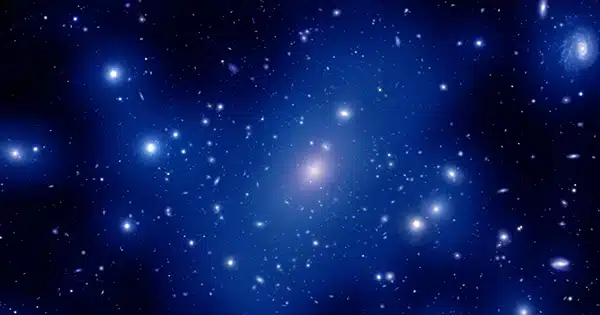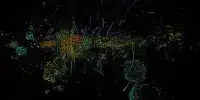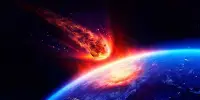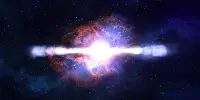Researchers at NASA’s Goddard Space Flight Center in Greenbelt, Maryland, discovered X-ray activity that sheds light on galaxies’ history.
The X-rays reveal massive clouds of frigid gas in the nearby spiral galaxy NGC 4945. The matter appears to have shot through the galaxy after its central supermassive black hole erupted some 5 million years ago.
“There’s an ongoing debate in the scientific community about how galaxies evolve,” said Kimberly Weaver, an astronomer at Goddard who led the research.
“Supermassive black holes are found in the centers of nearly all Milky Way-sized galaxies, and the extent to which they impact star formation is unknown. Studying nearby galaxies like NGC 4945, which we believe are in a transition stage, allows scientists to develop better models of how stars and black holes cause galactic changes.
Weaver presented the findings on behalf of her team at the American Astronomical Society’s 243rd meeting in New Orleans on January 11. The Astrophysical Journal is now reviewing an article based on the observation.
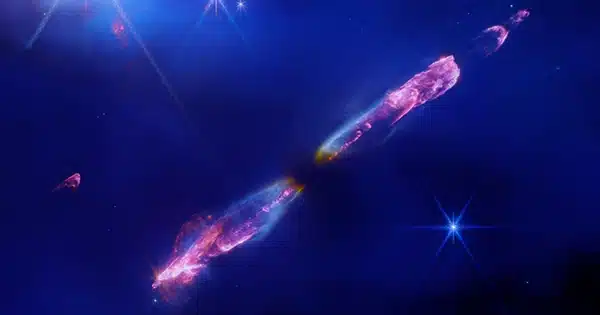
The study was made feasible by data obtained by the ESA (European Space Agency) spacecraft XMM-Newton (X-ray Multi-Mirror Mission) with assistance from NASA’s Chandra X-ray Observatory.
NGC 4945 is an active galaxy located in the southern constellation Centaurus, approximately 13 million light-years distant.
An active galaxy’s center is extremely bright and changeable, propelled by a supermassive black hole that warms a disk of gas and dust by gravitational and frictional forces. The black hole gradually eats the material around it, causing unpredictable oscillations in the disk’s emitted light. As with most active galaxies, NGC 4945’s black hole and disk are obscured by a dense cloud of dust known as a torus, which blocks some of the light.
Active galaxies’ cores can also propel high-speed particle jets and generate powerful winds that carry gas and dust.
NGC 4945 is also a starburst galaxy, which means it produces stars considerably more quickly than our own. Scientists believe that it produces the equivalent mass of 18 stars like our sun per year or nearly three times the pace of the Milky Way. Almost all star creation occurs in the galaxy’s center. A starburst outburst lasts 10 to 100 million years and ends when the raw material for future stars is gone.
Weaver, NASA’s XMM-Newton project scientist, and her team examined NGC 4945 using the satellite. In their data, they discovered what scientists refer to as the iron K-alpha line. This feature happens when very powerful X-ray photons from the black hole’s disk collide with cold gas elsewhere. (The gas is approximately minus 400 degrees Fahrenheit, or minus 200 degrees Celsius.) The iron line is widespread in active galaxies, but until these studies, astronomers assumed it happened on scales considerably closer to the black hole.
“Chandra mapped iron K-alpha in other galaxies. In this case, it assisted us in studying individual brilliant X-ray sources in the cloud to rule out any probable origins except the black hole,” said Jenna Cann, a co-author and postdoctoral researcher at Goddard. “But NGC 4945’s line extends so far from its center that we needed XMM-Newton’s wide field of view to see all of it.”
Because NGC 4945 is practically edge-on from our perspective, XMM-Newton was able to measure the extent of its iron line both along and above the galaxy’s plane, tracing it to 32,000 and 16,000 light-years, respectively—an order of magnitude farther than previously seen iron lines.
The chilly plasma emphasized by the line is believed to be a remnant of a particle jet that erupted from the galaxy’s central black hole roughly 5 million years ago. The jet was most likely oriented into the galaxy rather than out into space, creating a supercharged wind that was still propelling cold gas across the galaxy. It could even have triggered the current starburst event.
Weaver and her colleagues will continue to examine NGC 4945 to see if they can find any other ways in which the black hole influences the galaxy’s evolution. The same X-rays from the disk that are currently illuminating the cold gas may also begin to disperse it. Because stars require that gas to form, astronomers may be able to determine how activity surrounding a galaxy’s black hole can suppress its starburst phase.
“There are several lines of evidence that indicate black holes play important roles in some galaxies in determining their star formation histories and destinies,” said co-author Edmund Hodges-Kluck, a Goddard astronomer.
“We investigate a lot of galaxies, such as NGC 4945, because, while the physics of black holes are similar, the impact they have on host galaxies differs greatly. XMM-Newton assisted us in discovering a galactic fossil we were unaware of—but it’s likely to be the first of many.
